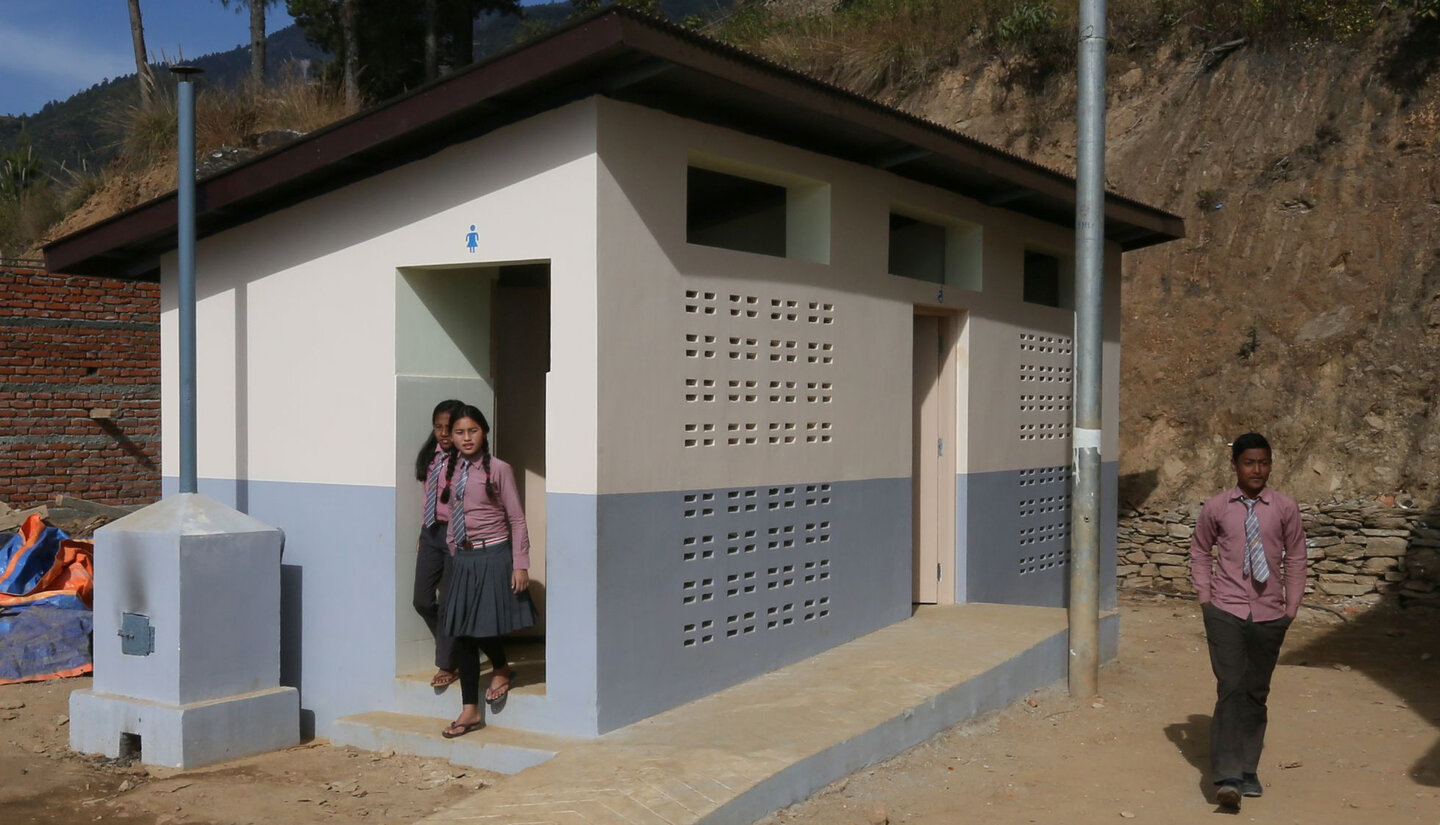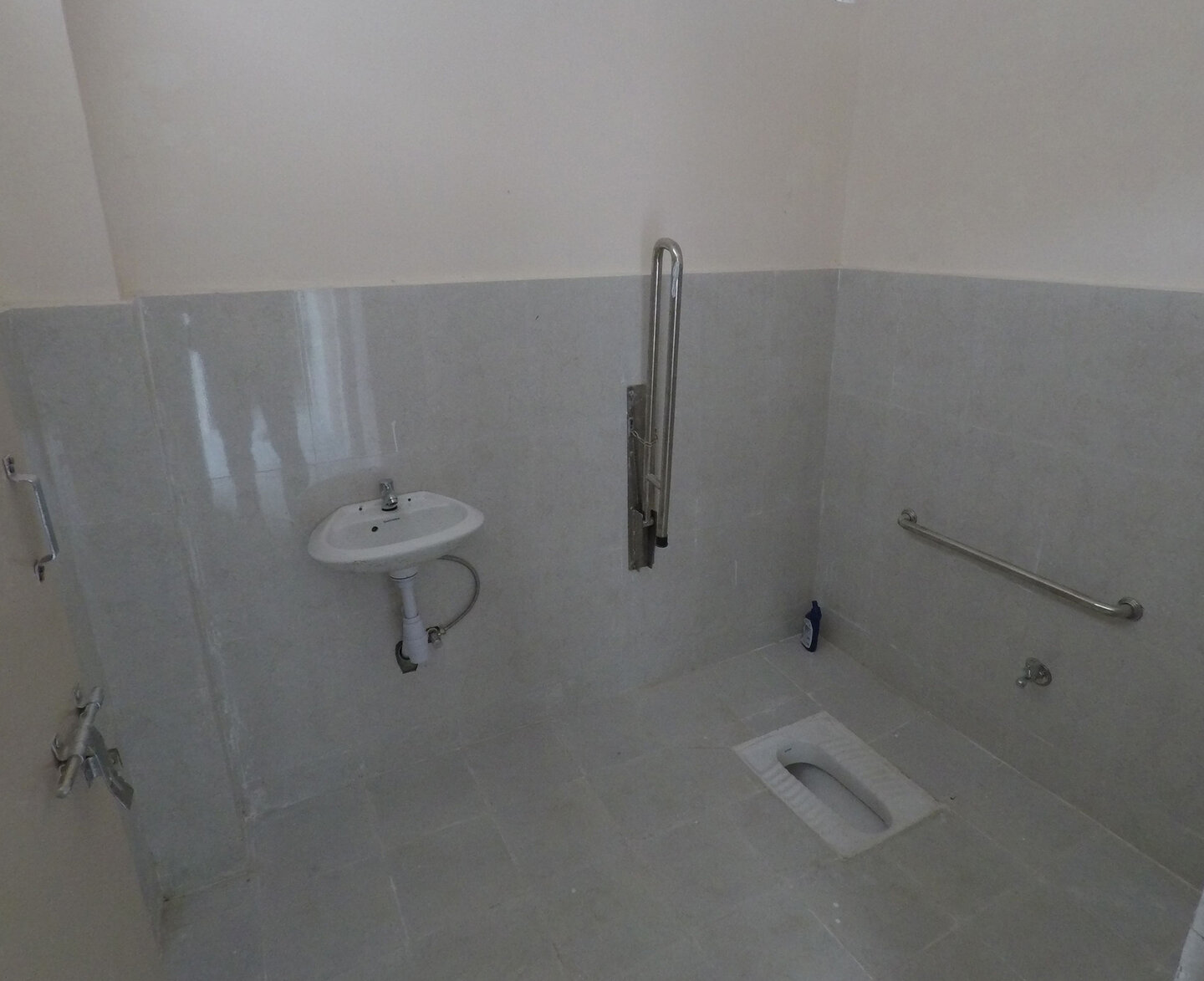In April it will be five years since the series of earthquakes hit central Nepal. Most humanitarian reconstruction operations have already ended; last Friday, in a workshop reviewing lessons learned, it was the turn of Caritas Swiss to announce the wrapping up of its operations. Caritas will leave behind thirty-six schools in Sindhupalchok (mainly Melamchi and Helambu municipalities) that are not only earthquake resilient, but also provide an attractive learning environment. The funds for rebuilding these schools were raised from a variety of sources, including public donations through Swiss Solidarity. Whilst Caritas Swiss led and managed the whole school reconstruction process, it was a collaborative Swiss effort; SKAT provided the school design, whilst Helvetas ensured the schools’ water supply, and awareness-raising on sanitation and hygiene (WASH). In eight schools, this was expanded to a “blue school” model, with inputs to the curriculum on water and waste management and the establishment of a kitchen garden.
Working with the Nepal government
The collaboration between Swiss NGOs was fortunate, but what was crucial was good collaboration with the Nepal government, primarily through the National Reconstruction Authority (NRA). Dilip Shekar Shrestha, Deputy Project Director of the NRA’s Central Level Project Implementation Unit (CLPIU) - Education, provided a sobering overview of the extent of the reconstruction challenge. In total some 9,300 schools were damaged in the earthquakes; 7,553 required reconstruction. In many cases, the site of these schools was very challenging. Some had to be relocated due to slope instability and the danger of landslides, and land donated in new areas was often not ideal. Retaining walls and other earthworks were quite commonly needed, adding to costs that were already high due to the difficulty of transporting materials to remote locations. To this was added the further difficulty of attracting skilled labor. It is therefore to the government’s credit that already 5,384 of those badly damaged schools have been rebuilt; 1,577 are under construction, whilst 592 are yet to be started – mainly due to a funding gap.
Most of the reconstruction has been financed through loans (albeit at negligible interest rates) from either the Japan International Cooperation Agency (JICA) or the Asian Development Bank (ADB). However, 15% of the reconstructed schools were financed outright through funds collected and managed by International NGOs – including the 36 built by Caritas Switzerland.
Seizing the opportunity to “build back better”
All the schools reconstructed after the earthquake have been designed to meet the Nepal government’s safe school concept. This has three pillars: the school must have safe learning facilities; it must have disaster management plan; and risk reduction and resilience must be part of the education provided. Most of the reconstructed schools, some 75% of them, have been built through a community managed process; in the case of larger schools (some 10% of the total), tenders were called, and professional contractors engaged. The 15% schools built by INGOs had the flexibility to adopt either model.

Additional ideas brought by INGOs
The safe school concept sets a basic standard, but it was widely acknowledged that improvements can be made upon it – and that INGOs have led the way in bringing innovations. The CEO of the NRA, Sushil Gyanwali, singled out as a “brilliant idea” the simple incinerators installed in all Caritas-built secondary schools adjacent to girls’ toilets. Used sanitary pads can be pushed into the incinerator through a hole in the toilet wall, allowing for clean and discrete disposal. As has also been shown in other parts of the world, simple menstrual hygiene management measures have a positive impact on teenage girls’ morale, school attendance, and ultimately their academic achievements.
Another relatively small innovation that can make a big difference to those who need it, is the equipment of toilets with a safety bar. Installed in all Caritas constructed schools, this bar can be lowered when needed by disabled pupils - and kept raised when not in use. The school buildings are in any case designed to be wheelchair accessible.
Amongst the head teachers who spoke at the workshop, the importance of a good water supply and sanitation facilities was widely stressed. The WASH message has also been made into a song and dance video, the lyrics of which were scripted by Govinda Rokaya and the music written by Hemanta Chemjong - both Helvetas WASH staff. The professional singer Tika Pun was engaged to sing with Hemanta. Shot in Melamchi and Helambu, the video is available on YouTube and is intended to appeal to a wide Nepalese audience; it has already been viewed over 2,500 times.

What are the lessons to be learned from the Caritas – Helvetas collaboration? This is best answered by Bernd Schäfer, Director of Caritas Switzerland in Nepal, who has overseen the school reconstruction process for the past three and a half years,
“For Caritas is was a great benefit to do this project jointly with Helvetas, which has worked in Nepal for more than 60 years and is a well renowned organization in Nepal. Focusing the contribution of Caritas and Helvetas in one region that suffered badly from the two major quakes in 2015 created synergies that have enhanced the benefit for the communities and allowed economical implementation of the project. Thirteen schools are connected to larger water supply systems that serve households and schools. Especially in the context of a reconstruction project, this is remarkable as usually similar projects opt for parallel systems, as it is too time consuming to coordinate with all relevant stakeholders.”
The photo heading this blog is of Saraswati Secondary School, Mahankal, Helambu Rural Municipality.


